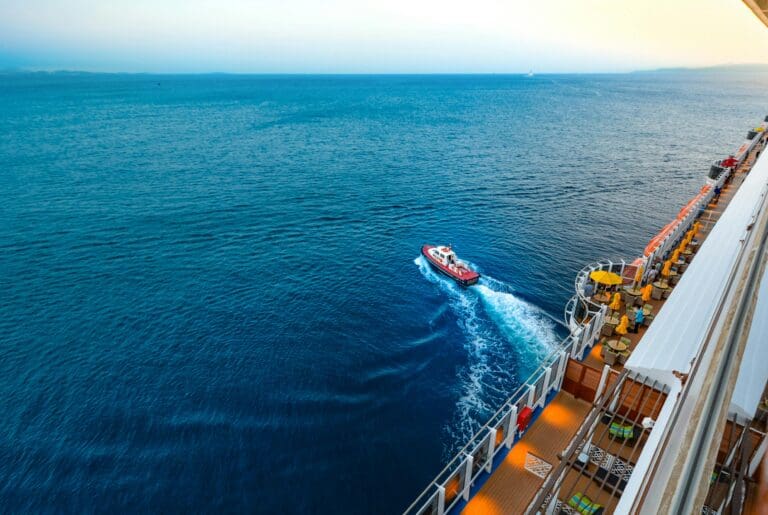(StLouisRestaurantReview) Sea travel is a year-round activity, with more and more tourists opting for it as a fun way to move from one destination to another and keep their ear to the sound of the sea. But it’s not only tourists—regular travelers also prefer a cruise as an occasional treat to celebrate a birthday, a special occasion, and more. But why do people love cruise trips?
One of the biggest reasons is space. Yes, the vast horizon gives you a sense of control over your own time—an opportunity to put smartphones and iPads aside and have a meaningful conversation with a friend or even a stranger.
With that being said, cruise trip organizers have a big task: to make the journey more interesting. Fine dining is certainly a significant game changer, but people want more.
Sit & Go Poker Dinners: Game Night with a Chef’s Touch
It’s been a while since offering a fine dining experience was only about great food—it’s also about the dining environment and the feeling people have during their meal. Entertainment is certainly an experience booster, and when a group of travelers has several thousand miles to cross by ship, gamified dining becomes one of the best relationship builders.
Unlike long, traditional poker tournaments, a sit-and-go game starts as soon as enough players sit down and typically wraps up in 30 to 60 minutes – perfect timing for a dinner event. This format’s quick setup and brisk pace make it an ideal mealtime diversion. There’s no waiting for a scheduled start; as soon as 6–10 diners are ready, the cards are dealt. In about an hour or less, one player triumphs, and dessert is served.
Why poker? For one, it’s interactive and social. Strangers turn into tablemates and teammates; a friendly bluff or laugh over a hand of cards can melt away social barriers. The strategic play and lighthearted competition give diners something to bond over beyond small talk. People often end up sharing stories and tips during the game, forming connections that last beyond the final hand. As the game goes on, players cheer for wins and laugh at close calls, bringing energy to the dining room. It feels like a mini game night hosted by the restaurant, adding a fun casino vibe without anyone having to leave their seat.
Importantly, these poker dinners are about fun, not high stakes. The ship’s crew can organize a casual tournament with chips and cards in minutes. With no real money on the line, it stays entertainment rather than gambling, meaning no special licenses or legal worries, just bragging rights for the winner. In the end, a Sit & Go poker dinner offers a chef’s culinary delights and a side of friendly competition, making an hour at the dinner table fly by in good company.
Culinary Competition at Sea: Trends and Tastes in Cruise Dining
Today’s cruise lines are in a culinary arms race, each trying to outdo the others with more dining options, diverse cuisines, and star-powered eateries. The result? Cruise ships now boast an astounding variety of restaurants, from sushi bars and steakhouses to celebrity chef bistros. Passengers have taken notice – and demand has increased. “As travelers demand more than buffets and banquet fare, cruise lines are doubling down on celebrity chef partnerships, regionally inspired menus and unique dining concepts,” one industry report observed. In other words, food itself has become a major attraction for booking a cruise.
One clear trend is the sheer number of dining venues on newer ships. Decades ago, a typical cruise ship had a main dining room and a buffet – maybe a piano bar or pool grill on the side. Now, floating mega-resorts come with dozens of eateries. Royal Caribbean’s latest giant, the Icon of the Seas, features “more than 20 dining venues onboard”, the most of any ship in the fleet. The previous record-holder, Wonder of the Seas (2022), similarly offers around 20 different restaurants and eateries. This means guests can try a new place every night of a one- or two-week cruise and still not sample them all.
The wide variety of food options on cruises is part of a clear strategy: give people more choices. Each restaurant offers something different — maybe sushi one night, a steakhouse dinner, a casual taco lunch, or barista-made coffee. Specialty restaurants (which usually cost extra) have become experiences on their own, tempting guests to pay a bit more for something special. To stand out, cruise lines bring in well-known chefs to make their food even better.
Other trends underscore how dining is now entertainment: open kitchens and chef’s tables where guests watch the cooking show live; food halls and market-style venues that turn eating into an exploration of global street foods; even cooking classes and culinary tours led by the ship’s chefs. Some lines offer hands-on kitchen experiences that blur the line between dining and activity – you’re learning and having fun, and then you eat a gourmet meal you helped create.
Cruise passengers have taken notice of all these innovations. A great meal can be as memorable as a shore excursion. As one travel consultant put it, “Each ship and line has its own approach to serving food and cruise cuisine,” and dining has truly “become an event not to be missed” on cruises. In practical terms, that means a cruise ship’s restaurants aren’t just feeding people – they’re wowing them. The ocean may be vast and the ports exotic, but for many cruisers, the main stage is the dinner plate: a perfectly plated dish, an engaging theme, and an experience to savor long after the voyage is over.
Copyright © 2025 – St. Louis Media, LLC. All rights reserved. This material may not be published, broadcast, or redistributed.
For the latest restaurant news and reviews, head to St. Louis Restaurant Review.
